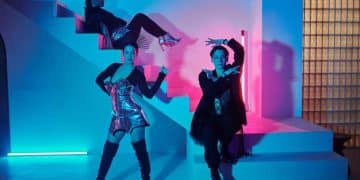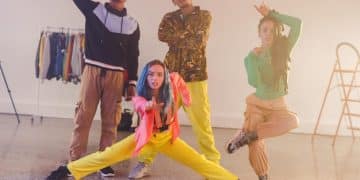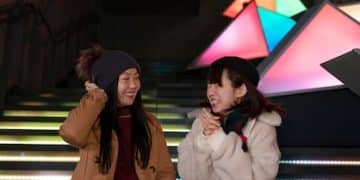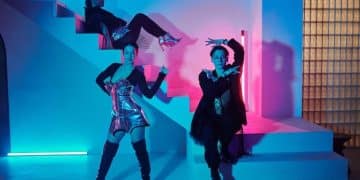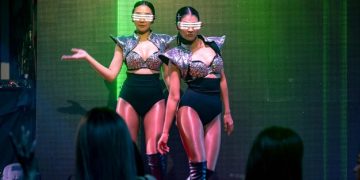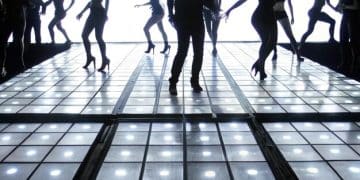The Evolution of K-Pop Choreography: Influence on US Pop Culture in 2025
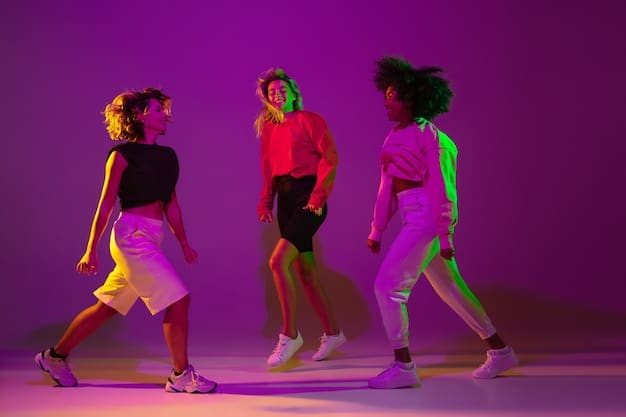
The evolution of K-Pop choreography is significantly influencing US pop culture by 2025, blending intricate dance moves with viral trends and advanced technology, creating a global phenomenon that reshapes music video aesthetics and live performance styles.
K-Pop’s vibrant and meticulously crafted choreography has increasingly captivated global audiences, and by 2025, its influence on US pop culture is undeniable. From mainstream music videos to viral dance challenges, the dynamic energy and precision of K-Pop moves are reshaping the landscape of American entertainment. The evolution of K-Pop choreography represents more than just a series of steps; it embodies a cultural phenomenon that intertwines artistry, athleticism, and technological innovation.
The Origins of K-Pop Choreography
K-Pop choreography draws from a rich tapestry of global dance styles, blending traditional Korean dance with hip-hop, jazz, contemporary, and even martial arts. This eclectic mix creates a unique visual language that is both captivating and technically demanding. Early pioneers of K-Pop recognized the importance of visually engaging performances, and this emphasis on choreography has only intensified over the years.
Early Influences and Key Figures
In the early days of K-Pop, choreographers played a pivotal role in shaping the visual identity of emerging groups. Figures like Hong Young Joo, often credited as one of the first K-Pop choreographers, set the stage for future innovations. These early choreographers often incorporated elements of then-popular dance styles, such as breakdancing and street dance, to appeal to a younger audience.
The Integration of Global Styles
As K-Pop grew, so too did its incorporation of diverse dance styles. Japanese pop’s emphasis on synchronized movement influenced early K-Pop groups, while American hip-hop and R&B added a layer of edginess and flair. This fusion of styles helped K-Pop stand out on the global stage.
- Japanese Pop Influence: Synchronized movements and formations that emphasize group harmony.
- American Hip-Hop and R&B: Incorporation of street dance elements, adding a layer of edginess.
- Traditional Korean Dance: Subtle incorporation of traditional Korean dance movements, adding cultural depth.
- Martial Arts: Integrating elements of martial arts for dynamic and powerful routines.
The integration of various styles, under the guidance of visionary choreographers, laid the groundwork for the complex and innovative dance routines that define modern K-Pop. This fusion enabled K-Pop to carve out a distinct niche within the global music industry.
The foundation of K-Pop choreography, built on a blend of diverse influences and the dedication of early choreographers, has allowed the genre to continuously evolve and captivate audiences worldwide. This blend of tradition and innovation is a hallmark of K-Pop’s enduring appeal.
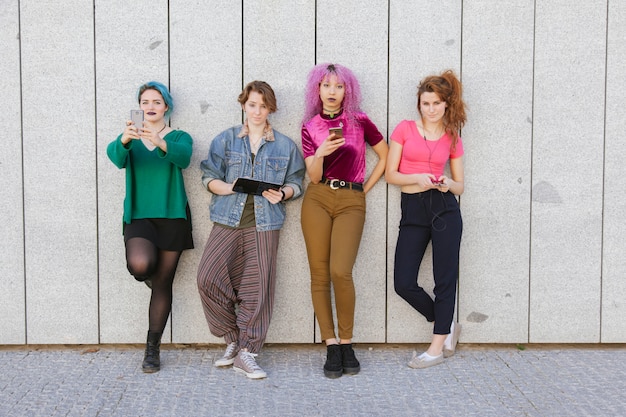
Technological Advancements in K-Pop Dance
Technological innovations have profoundly impacted K-Pop choreography, enabling more complex formations and enhancing visual storytelling. Motion capture, virtual reality (VR), and augmented reality (AR) are now integral parts of creating K-Pop performances, pushing the boundaries of what is visually and physically possible.
Motion Capture and Digital Enhancement
Motion capture technology allows choreographers to translate complex movements into digital animations, which can then be refined and enhanced. This technology is particularly useful in creating visually stunning effects that would be impossible to achieve with traditional choreography methods. It also helps in pre-visualizing performances and optimizing formations.
Virtual and Augmented Reality
VR and AR technologies have opened up new avenues for audience engagement. During live performances, AR elements can be overlaid onto the stage, creating immersive environments. VR experiences allow fans to step into the world of their favorite K-Pop groups, interacting with virtual dancers and environments.
Consider these technological advancements:
- Motion Capture: Used to create digital animations and enhance movement precision.
- Virtual Reality (VR): Offers immersive experiences for fans, enabling interaction with virtual dancers.
- Augmented Reality (AR): Overlays digital elements onto live performances, creating immersive environments.
- LED staging: Allows for dynamic and visually stunning transitions during live performances.
The integration of technology has not only elevated the visual appeal of K-Pop performances but has also expanded the creative possibilities for choreographers. These advancements ensure that K-Pop remains at the forefront of entertainment innovation.
The fusion of technology and artistry has revolutionized K-Pop choreography. From motion capture to virtual reality, these advancements have unlocked new creative possibilities, ensuring that K-Pop remains a leader in visual and performance innovation.
The Rise of Dance Challenges and Viral Trends
Dance challenges have become a cornerstone of K-Pop’s promotional strategy. These challenges leverage social media platforms to engage fans, promote new releases, and create viral moments. By 2025, the impact of these trends on US pop culture is more significant than ever, with American artists adopting similar strategies.
TikTok and the Power of Short-Form Content
Platforms like TikTok have revolutionized how music is consumed and shared. K-Pop groups have expertly capitalized on this trend by creating short, catchy dance routines that are easy for fans to replicate. These routines often go viral, reaching millions of users and driving up streams and album sales.
Collaborations and Crossovers
K-Pop groups often collaborate with American artists, creating crossover hits that blend the best of both worlds. These collaborations frequently include joint dance challenges, further amplifying their reach and impact. Such partnerships are increasingly common by 2025, blurring the lines between K-Pop and US pop culture.
Examples of Successful Dance Challenges
- “Any Song” Challenge (Zico): A simple yet catchy routine that sparked a global phenomenon.
- “Dynamite” Challenge (BTS): A disco-inspired dance that encouraged fans to showcase their creativity.
- “Wa Wa” Challenge (Rina Sawayama): A fusion-style track with choreography that’s as distinctive as the song.
- “Lalala” Challenge (Stray Kids and Charlie Puth): An energetic partnership that went viral.
The strategic use of dance challenges has been instrumental in K-Pop’s global expansion. By engaging fans and creating viral moments, these challenges have transformed the way music is promoted and consumed.
Dance challenges have evolved into a central element of K-Pop’s promotional strategy, engaging fans and driving viral moments. By 2025, their influence on US pop culture is unmistakable, with American artists increasingly adopting similar tactics to connect with audiences.
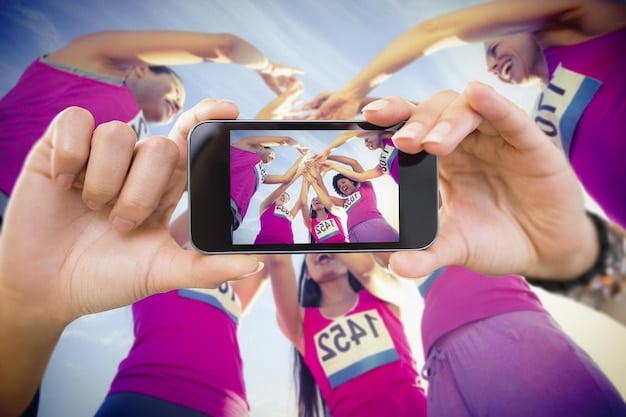
Influence on US Mainstream Media
The influence of K-Pop choreography is now pervasive in US mainstream media, from music videos and live performances to commercials and television shows. American artists are increasingly incorporating K-Pop-inspired dance moves and visual aesthetics, signaling a significant cultural shift.
Music Videos and Visual Storytelling
American music videos are now often borrowing elements from K-Pop, such as complex group formations, synchronized movements, and visually dynamic sets. This influence extends beyond pop music, with artists in other genres also experimenting with K-Pop-inspired choreography.
Live Performances and Stage Design
The staging and choreography of live performances by US artists are also evolving. More elaborate sets, intricate lighting designs, and highly synchronized dance routines are becoming increasingly common, reflecting K-Pop’s emphasis on visual spectacle.
Commercials and Brand Endorsements
K-Pop’s visual and performance style is also making its way into commercials and brand endorsements. Companies are leveraging K-Pop-inspired aesthetics to appeal to younger audiences, capitalizing on the genre’s global popularity.
- Music Videos: Adoption of complex formations and synchronized movements.
- Live Performances: More elaborate sets and intricate choreography.
- Commercials: Use of K-Pop-inspired aesthetics to appeal to younger audiences.
- Television Shows: Incorporating K-Pop dance styles into TV shows.
The integration of K-Pop elements into US mainstream media represents a significant cultural exchange. This influence highlights K-Pop’s growing dominance and its ability to reshape the landscape of American entertainment.
K-Pop’s influence on US mainstream media continues to grow, with American artists and brands increasingly incorporating K-Pop-inspired choreography and visual elements. This cultural exchange underscores K-Pop’s global impact and its role in shaping modern entertainment.
The Role of Social Media
Social media platforms play a crucial role in disseminating K-Pop choreography and amplifying its influence. Platforms like Instagram, YouTube, and Twitter are instrumental in promoting dance challenges, sharing tutorials, and connecting fans with their favorite groups. These platforms ensure that K-Pop’s reach continues to expand.
Platforms and Their Impact
Each social media platform offers unique opportunities for K-Pop groups to engage with their fans. Instagram is ideal for sharing visually stunning content, while YouTube is used for tutorials and behind-the-scenes footage. Twitter serves as a hub for real-time updates and fan interactions.
Fan Engagement and Community Building
Social media also facilitates fan engagement and community building. Fans can participate in dance challenges, create fan art, and connect with other fans from around the world. This sense of community is a key factor in K-Pop’s enduring popularity.
Influencer Marketing
Influencer marketing is another important aspect of K-Pop’s social media strategy. K-Pop groups often partner with influencers to promote their music and dance routines, leveraging the influencers’ reach to tap into new audiences.
Key social media strategies:
- Platform-Specific Content: Tailoring content to suit each platform’s unique features.
- Fan Interaction: Encouraging fans to participate in challenges and create content.
- Community Building: Fostering a sense of community among fans.
- Influencer Partnerships: Collaborating with influencers to amplify reach.
Social media is an indispensable tool for K-Pop groups, enabling them to connect with fans, promote their music, and amplify their influence. This digital ecosystem ensures that K-Pop remains a dominant force in global pop culture.
Social media platforms are crucial in disseminating K-Pop choreography and amplifying its influence, fostering fan engagement and community building. By leveraging these digital tools, K-Pop groups ensure their continued growth and global dominance.
The Future of K-Pop Choreography in the US
Looking ahead, K-Pop choreography is expected to continue evolving and exerting its influence on US pop culture. Emerging trends include the integration of AI and robotics into live performances, as well as a greater emphasis on inclusivity and representation. These developments promise to reshape the future of entertainment.
AI and Robotics
The integration of AI and robotics into K-Pop performances is gaining momentum. Drones, robotic dancers, and AI-generated visual effects are already being incorporated into live shows, creating spectacles that push the boundaries of what is possible.
Inclusivity and Representation
There is a growing demand for greater inclusivity and representation in K-Pop choreography. Groups are increasingly incorporating diverse dancers and movement styles to reflect the global nature of their fanbase.
Sustainability and Ethical Practices
Sustainability and ethical practices are also becoming more important. K-Pop groups are starting to prioritize eco-friendly stage designs and fair labor practices, aligning their values with those of their fans.
Future trends in K-Pop choreography:
- AI and Robotics: Integration of drones, robotic dancers, and AI-generated visual effects.
- Inclusivity: Greater representation of diverse dancers and movement styles.
- Sustainability: Eco-friendly stage designs and ethical labor practices.
- Interactive Technology: Use of interactive technologies to engage audiences in real-time.
The future of K-Pop choreography in the US is bright, with emerging trends promising to push the boundaries of creativity and innovation. By embracing AI, inclusivity, and sustainability, K-Pop is poised to remain a leading force in global pop culture.
The future of K-Pop choreography in the US is characterized by innovation, inclusivity, and sustainability. As AI and robotics become more integrated, and as groups prioritize diverse representation and ethical practices, K-Pop is set to continue its reign as a global cultural phenomenon.
| Key Point | Brief Description |
|---|---|
| 🌟 Origins | Blend of Korean, hip-hop, jazz, and global dance styles. |
| 💻 Technology | VR, AR, motion capture enhance performances. |
| 📱 Social Media | Dance challenges and viral trends boost popularity. |
| 🌎 US influence | American music videos and live shows incorporate K-Pop styles. |
FAQs
K-Pop choreography is influenced by a diverse range of styles, including traditional Korean dance, hip-hop, jazz, contemporary dance, and martial arts, creating a unique and dynamic visual language.
Technology, such as motion capture, VR, and AR, has revolutionized K-Pop dance, enabling more complex formations, enhancing visual effects, and creating immersive experiences for fans.
Dance challenges are a crucial promotional tool in K-Pop, leveraging social media to engage fans, promote new releases, and create viral moments that significantly boost visibility and popularity.
K-Pop choreography is increasingly influencing US pop culture, with American artists incorporating K-Pop-inspired dance moves, synchronized formations, and visual aesthetics into their music videos and live performances.
Future trends in K-Pop dance include the integration of AI and robotics, a greater emphasis on inclusivity and representation, and a growing focus on sustainability and ethical practices in the industry.
Conclusion
The journey of K-Pop choreography is a testament to the power of innovation, cultural fusion, and technological advancement. As we look to 2025, the influence of K-Pop on US pop culture is set to deepen, reshaping the landscape of entertainment and solidifying K-Pop’s place as a global phenomenon.
